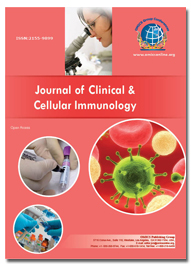Theme: Modern approaches in prophylactic measures for antimicrobial resistance
Euro Antibiotics 2019
Antibiotics conference committee is going to welcome all the participants from all over the world to attain the Euro Antibiotics 2019 conference, which is being held in Paris, France during December 02-03, 2019. This gathering will give the whole concentration on existing and most recent developments in every aspect of antibiotics and antimicrobial research. In the light of this subject, this opportunity will provide a great platform for discussing among global scientists on antibiotics and its prophylaxis. Therefore, these conference committee members are giving warm welcome all the prominent researchers, students and delegates to participate in this upcoming antibiotics conference event to witness a valuable scientific discussion and to participate in this session for contributing to the future innovations in this field.
Over the years antibiotics have saved many lives by the process of how bacteria were killed using antibiotics. A new study reveals that penicillin and other antibiotics produce destructive molecules that fatally damage bacterial DNA through a long chain of cellular events. New targets involve some bacterial cell is able to save itself from antibiotic-induced DNA damage. Thus recent research is required to understand and solve this problem. In this Conference we invite eminent personalities from universities, clinical research institutions and diagnostic companies, business people oriented with the field of antibiotics to share their research involvements and views on all aspects of this rapidly growing field of antibiotics and thereby, providing a showcase of their latest techniques.
Target Audiences:
- Immunologists
- Pharmacists
- Doctors
- Researchers, academia
- Drug Manufacturers
- Faculties
- Vaccine Associations
- Young researchers
- Occupational Therapists
- Business Entrepreneurs
- Biomedical companies
- Medical and Healthcare Professionals
- Deans and Directors of Medical Universities and Institutes
- Pharmaceutical companies
- Associations of Antibiotics
1. Antibiotics:
Antibiotics are the most important antimicrobial agents for fighting against bacterial, fungal activities or infections. Three types of antibiotics are found as natural antibiotics which are produced by natural microorganisms via fermentation, semi-synthetic antibiotics that can be prepared by using natural fermentation process with chemical combination and synthetic antibiotics which are completely prepared in laboratory synthetically. Some are toxic to humans and animals also, even when given in therapeutic dosage.
2. Types of Antibiotics:
Antibiotics belong to a class of antimicrobials, a larger group which also includes anti-viral, anti-fungal, and anti-parasitic drugs. The main classes of antibiotics are beta-lactams which again include penicillin, cephalosporin, macrolides, fluoroquinolone, tetracycline, and aminoglycosides.
3. Applications of Antibiotics:
The choice of relevant antibiotics is presently based on individual patient’s need. A large number of bacterial diseases have been brought under control by using antibiotics. These include pneumonia, cholera, tuberculosis and leprosy. The antifungal antibiotic griseofulvin has controlled the debilitating fungal skin diseases such as ring worm. There are certain antibiotics which can be used in canning industry or antibiotics such as penicillin, tetracycline and erythromycins are very widely used in processing of animal feeds.
4. Pediatric Antibiotics:
Prescription of antibiotics for children is a scrupulous act. Side effects from antibiotics are a common reason that children go to the emergency room. The drugs can cause diarrhea or vomiting and about 10 out of 100 children have allergies to them. Some of these allergic reactions can be serious and life threatening.
5. Oncology Antibiotics:
Laboratory-produced drugs used to target and destroy cancerous cells. Therapeutic anticancer antibiotics have become an accepted treatment for certain types of cancer. These drugs bind specifically to primary and metastatic cancer cells to block cell growth, while limiting effects on surrounding healthy cells. Antibiotic medicines kill malignant cells by fragmenting the DNA in the cell nucleus and by oxidizing critical compounds which are necessary for the cell. For patients receiving chemotherapy, there is an increased risk of infection due to a low white blood cell count (neutropenia) caused by a toxic effect of chemotherapy on the bone marrow. Preventive antibiotic therapy before the development of fever prevents illness and death in people with a low white blood cell count after chemotherapy.
6.Antibiotic Alternatives:
Numerous alternatives to antibiotics are found for treating specific diseases including bacteriophage therapy, predatory bacteria, bacteriocins and competitive exclusion of pathogens. Phage therapy is the most heavily researched of the alternatives to antibiotics for disease treatment. Other alternatives to antibiotics are already being tested by researchers around the world. Two of these are the use of metals such as silver, zinc and copper and the use of organic acids such as food acid that is used as a preservative in the food industry.
7. Antimicrobial Resistance:
Antimicrobial resistance happens when microorganisms (such as bacteria, fungi, viruses, and parasites) change for exposing to antimicrobial drugs (such as antibiotics, antifungals, antivirals, antimalarial and anthelmintic). Without effective antimicrobials for prevention and treatment of infections, medical procedures such as organ transplantation, cancer chemotherapy, diabetes management and major surgery become at very high risk. Antimicrobial resistance is a complex problem that affects all of society and is driven by many interconnected factors. Single, isolated interventions have limited impact. There have been increasing public calls for global collective action to address the threat, including a proposal for international treaty on antimicrobial resistance.
8. Next Generation Approaches:
The increasing fear of drug-resistant superbugs is leading to a growing push for the next generation of antibiotics. The development of new antibiotics is crucial to controlling current and future infectious diseases caused by antibiotic-resistant bacteria. The discovery of a new antibiotic called teixobactin was announced by international team of researchers in 2017. The researchers now plan on studying the bacteria and decide what tools might be able to control its behaviour to release its full antibiotic potential. An expected 5–10% of all hospitalizations are perplexed by a nosocomial disease with an expected cost of $4.5–5.7 billion every year in the USA alone. More varieties of biological solution are yet to be discovered in this field.
9. Industrial Scope of Antibiotics:
Antibiotics can be used in non-medical industries. They are mainly used in animal husbandry, bee-keeping; fish farming and other forms of aquaculture, ethanol production, horticulture, antifouling paints, food preservation and many more.
10. Antibiotics and Public Health:
Antibiotics are strong medicines that treat bacterial infections. Common illnesses caused by bacteria are urinary tract infections, strep throat, pneumonia and more. Antibiotics can treat bacterial infections by killing the bacteria that causes them. Tetracycline is often used to treat acne and rosacea. Sulfonamides used to treat UTIs, bronchitis, eye and ear infections, pneumonia and bacterial meningitis. Cephalosporin can be used to treat UTIs, ear and skin infections, respiratory infections, bacterial meningitis, and sepsis. Overuse of antibiotics results development of resistance bacteria which cannot respond to previously used antibiotics and this becomes a widespread problem for the public health.
The worldwide market of antibiotics are expected to grow because of factors like increasing prevalence of chronic diseases, growing healthcare expenditure, improvement in access to healthcare, high investment in research & development, enhancements of supports from government and stakeholders such as UNICEF, WHO, PAHO and others. The global demand for antibiotics has increased significantly over the past two decades. The antibiotics market was valued at about $40,866 million in 2017, which is estimated to register a compound annual growth rate (CAGR) of 4.7%, over the forecast period of 2018 to 2023. There are a range of global pharmaceutical companies, as well as smaller firms which plays an important role in domestic regions in the production of generic drugs. Most of the antibiotics are low-cost and off-patent generic medicines which are easily and widely affordable, especially among the low income and lower-middle-income countries. In addition, the generic industries play a major role in the cost reduction of pharmaceutical drugs, which increase consumption and higher availability in worldwide.
To share your views and research, please click here to register for the Conference.
To Collaborate Scientific Professionals around the World
| Conference Date | December 02-03, 2019 | ||
| Sponsors & Exhibitors |
|
||
| Speaker Opportunity Closed | |||
| Poster Opportunity Closed | Click Here to View | ||
Useful Links
Special Issues
All accepted abstracts will be published in respective Our International Journals.
- Advances in Antibiotics & Antibodies
- Journal of Clinical & Cellular Immunology
- Journal of Antivirals & Antiretrovirals
Abstracts will be provided with Digital Object Identifier by



















